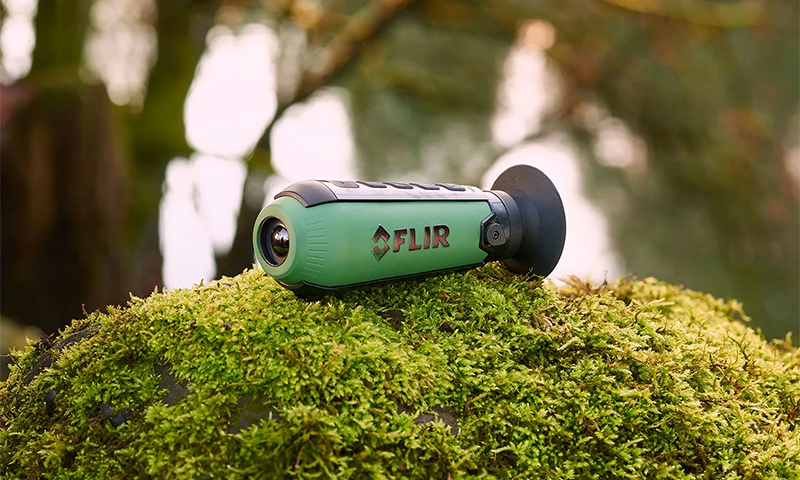Wetsuit is necessary for everyone who trains or actively rests on the "open" water. Without it, you will not last even an hour even in a warm sea - hypothermia due to temperature differences will quickly make itself felt. It is from this water suit and protects the swimmer's body. And he is able to protect the skin from injury and add speed to its owner. The main thing - do not make a mistake with the choice and find equipment that is ideal for your classes, be it surfing, diving or underwater spelunking.

Content:
The best manufacturers of wetsuits - which company to choose
Wetsuit - not cheap equipment, and he bought more than one season. Agree, it will be a shame to spend a lot of money on goods of dubious quality and in a month to go to the store for a new outfit.
It is better to immediately take a model of a well-known company and quietly go in for your favorite sport, without thinking that the hydrick will leak “not where it should be”.
Excellent water suits are offered by the company:
- Marlin Skiff;
- Scubapro;
- Mystic;
- Omer;
- AquaLung.
A detailed description of the best wetsuits from these manufacturers can be found in our other article. But before you buy your favorite model, it is worth exploring the main selection criteria on which both your comfort and safety during occupations will depend.
Cut Wetsuits
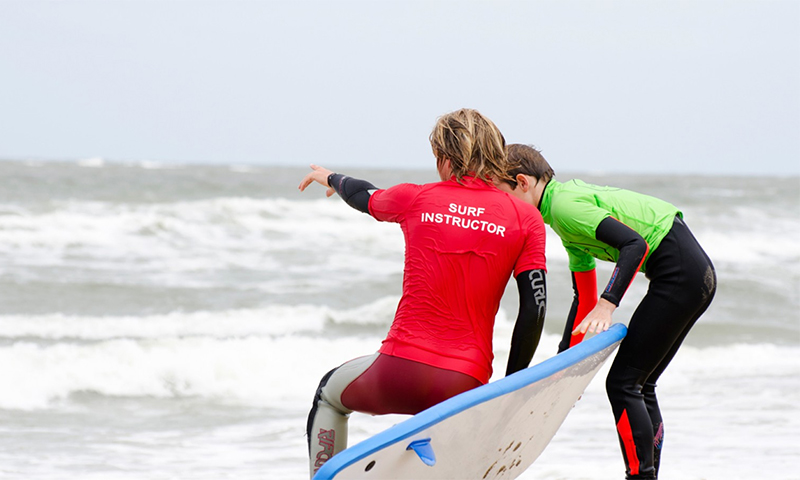
Wetsuit does not have to be a solid jumpsuit, covering the body from the ankles to the throat and wrists.
There are modifications where the jacket and / or pants are shortened or are generally separated from each other. A waterproof elastic helmet glued to the throat cuff may also be present. It all depends on what temperature conditions the equipment is purchased for.
The main task of water suits is to keep the swimmer warm, and at the same time to protect him from the sun, wind and possible injuries to the skin. And some modern models are so perfect that they even help the owner to swim, redirecting oncoming water flows and thereby reducing its resistance.
Types of wetsuits
Wet

These are the cheapest and at the same time the most comfortable costumes, which received their name because of the non-standard principle of "heating".
Through a zipper and some unconsolidated parts of the overalls, a small amount of water (0.5-1 L) enters it, which does not flow back. It is heated by the athlete's body and turns into a kind of layer between the skin and the neoprene shell, reducing heat loss.
Usually the thickness of a wet diving suit is 1-5 mm, which makes it possible not to experience discomfort in water at a temperature of +16 .. + 24 ° C. There are ultra-thin models of Lycra, but they are already designed for warm water around +25 .. + 30 ° С. Special isolation from them is not required - only protection against jellyfish and minor scratches.
The neoprene shell of a wet wetsuit can be duplicated by other materials (thermoplum, nylon). The additional layer gives strength and improves thermal insulation properties, but at the same time significantly inhibits the movement of the swimmer.
Pros:
- The widest range of models;
- Light and comfortable;
- They have good elasticity;
- They are relatively inexpensive.
Minuses:
- Quite thin, which makes it worse to keep warm and easy to tear;
- Models with long sleeves and pants are difficult to wear - you'll have to use special gel.
Dry
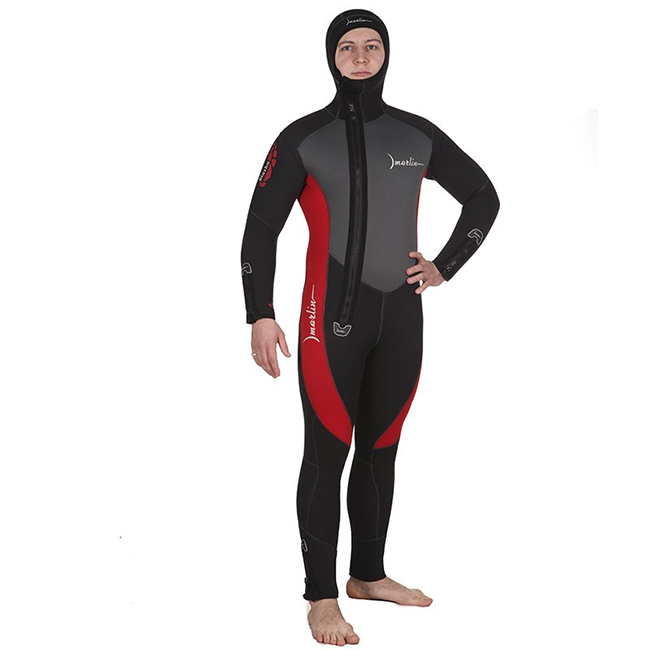
These costumes are the exact opposite of those described above. They are absolutely sealed, do not let the water inside and retain the heat generated by the human body as much as possible.To do this, dry jumpsuits "spliced" with bots, elastic helmet and obturators (sealing cuffs on the wrists, legs and neck), complete with thermal underwear and equipped with a gas-tight zipper.
Inside the dry wetsuit are air valves that provide the swimmer with the greatest possible comfort in heavy gear. The shell itself is quite thick (5-15 mm) and seriously hampers movement, especially at great depths. But in it you can dive even in very cold water below 0 ° С.
Dry-type costumes cost a lot of money, so they are mainly used by professionals. Also, due to their large thickness, they are only suitable for carrying out a limited list of works where special mobility is not required. But it is dry models that solve the problem of a long time a person is under water.
Pros:
- Absolutely hermetic;
- Under them you can wear thermal underwear or just warm clothes;
- In dry suits it is almost impossible to freeze, either in water or on the surface;
- Very durable;
- Allow to be under water for a long time.
Minuses:
- Shackled movement;
- Very expensive.
Semi-dry

Intermediate between wet and dry wetsuits. From the first they are distinguished by a more dense layer of neoprene, which better retains heat, the presence of obturators and waterproof zippers. But the water under the shell can still seep, however, in a smaller volume (about 200-250 ml).
The thickness of semi-dry suits is 3-7 mm. Allowable water temperature is +10 .. + 20 ° С. Usually these are two-component models of overalls and jackets with double cuffs on the wrists and ankles, but a helmet, bots and protective pads on the knees and elbows can also be included.
Pros:
- Excellent heat retention in cool water;
- Enough comfortable and comfortable;
- Lightweight but durable;
- Almost do not hold down movements;
- Provide good skin protection against mechanical damage.
Minuses:
- Allow to be in the water for no longer than 2 hours.
Wetsuit selection options
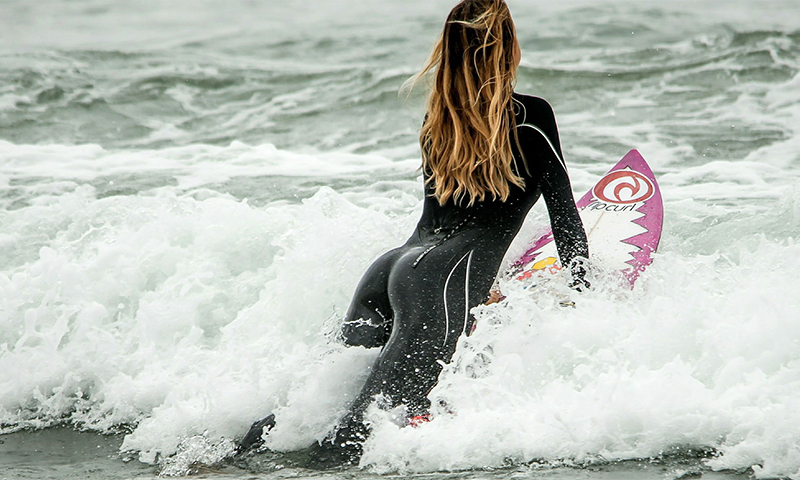
Material
About 90% of wetsuits on the market are made of neoprene - lightweight foamed rubber. This material has good resistance to compression under water pressure, so its insulating properties are not so catastrophically reduced. And after the ascent to the surface, the shell completely restores its volume.
In the manufacture of wetsuits use two types of neoprene: foamed gas (better quality) and porous chemical treatment (this is cheaper). In addition, there are many varieties of neoprene materials, since each manufacturer tries to create on its basis something more perfect.
When choosing a wetsuit, you only need to know the type of shell:
1. "Naked" neoprene - lightweight, flexible, good protection from cold water, but too susceptible to UV rays and mechanical damage, so its service life is small. Most often used for the manufacture of sealing inserts.
2. Duplicated (one-sided or double-sided) - more durable and, accordingly, durable. According to its heat-shielding properties, it exceeds the “naked” fellow by 15-25%.
3. "Open Pore" - on the inside has half-open pores that stick to the body, like suckers. This reduces the circulation of water under the shell of a wet suit and improves its thermal insulation properties.
For the manufacture of models of the dry type can be used other types of elastic materials:
1. Trilaminate is a hybrid of rubber and nylon. Flexible, well protects the swimmer from the water, but not from the cold, so you must always wear thermal underwear.
2. Pressed neoprene - has a high insulating properties, however, constrains the movement of the swimmer and can not boast of sufficient wear resistance.
3. Broken neoprene is ideal with thermal protection at the level of extruded material, but much more durable and long-lasting.
4. Superstretch is the same neoprene, but with a very high elasticity and a peculiar “memory effect”. Used in the form of inserts on the shoulders and in the armpits, so as not to obstruct the movement of the swimmer.
Duplication
To improve the strength and thermal insulation properties of the wetsuit, manufacturers often duplicate them with additional materials from one or two sides. Of course, the cost of equipment from this increases, but its characteristics are markedly improved.
As an additional layer can be used:
1. Plush (PL) or thermoplus - is applied on the inner side of the neoprene shell, improving its heat insulating properties. Thanks to this duplication, the costume is much easier to put on and take off.
2. Nylon (N) is used both from the inside and the outside, increasing the strength of the base material. In some models, nylon cord can play the role of a reinforcing layer between the two neoprene canvases.
3. Titanium (Ti) or aluminum (Al) deposition - has reflective properties, reducing heat loss by 20-30%.
Shell thickness
It all depends on the conditions of use of the wetsuit. And you have to look for a compromise, since an increase in the thickness of neoprene on the one hand reduces heat loss, and on the other - makes movement more difficult.
1. 1-2 mm - provides maximum flexibility and minimal thermal protection, allowing you to swim only in warm water (above +27 ° C);
2. 3 mm - allows use at temperatures not lower than +20 ° C;
3. 5-6 mm - to cope with its task in a cool pond (about +15 ° C);
4. 7 mm - allows temperature reduction to +12 ° С;
5. 9 mm - designed for cold water + 10 ° С.
These figures are valid for wet and semi-dry wetsuits, dry models can be used in cold weather. However, these values are only advisory in nature, since each person responds differently to the cold. So when choosing, consider also how “cold” you are.
If you really need good thermal insulation, but you need to maintain maximum mobility in water, look for a combined model of neoprene of different thickness. Here at the fold points (in the armpits, on the elbows, under the knees, etc.), thinner inserts are glued in, and the indicators of all the materials used are recorded in the marking of the suit through a fraction.
Cut
Wetsuit cut should be selected "according to the weather" and taking into account the peculiarities of your water activities.
1. In warm water and in the absence of serious obstacles that could scratch the skin, short shorty with open elbows and knees will suffice.
2. In cold waters, as well as for diving to reefs and underwater caves, it is better to use monosuits or combined models with long sleeves and trouser legs.
The presence of lightning is also one of the important parameters. A long clasp facilitates the process of removing / putting on a wetsuit, otherwise you will have to get into it through the throat.
Pay attention to its location. It is most convenient if it is on the jacket in front, but on the back the zipper will never bristle, reducing the aerodynamic characteristics of the swimmer. The most undesirable option is a shoulder fastener, which with the intensive movement of the hands can interfere with and even rub the skin.
Type of stitches
From them will depend on the strength and flexibility of your suit, and hence its service life. Manufacturers offer several versions of the seams:
1. Zigzag - poorly withstand the load, so it can only be used in areas that do not experience serious tension. If the costume is completely made with such a seam, do not buy it.
2. Mauser - quality, but not very elastic seam. Will show itself well only if the equipment is matched exactly in size.
Pay attention not only to the features of stitching, but also to the method of joining parts.
In cheap suits, the edges simply fold and are sheathed through the top - this is a seam overlock, which is neither sturdy nor sufficiently elastic.In addition, it is bulging, which can cause unpleasant sensations to the swimmer.
A flat seam of flatlocks is a more comfortable option, since here, before flashing, the ends of the neoprene fabric are joined to each other. Alas, it is suitable only for wet and semi-dry wetsuits, as there are many holes through the connection lines from the needle that allow water to pass through.
Blindstitch (blind or hidden seam) - absolutely tight, durable and flexible. Here, all the details of the costume are first glued together and only then stitched. Moreover, the needle does not pierce the shell through, but forms an interlacing in the body of the seam.
To improve the characteristics of frankly weak seams, additional sealing is capable. This may be a partial or full sizing of the joints with a neoprene tape, but impregnation with liquid rubber is considered the best option.
The size
In order for the wetsuit to sit comfortably on the body and fulfill all its protective functions, it must be matched strictly in size. Here you have to take into account several parameters:
1. Growth;
2. Chest girth;
3. Width waist;
4. The volume of the hips.
When buying from an online store, it is also advisable to specify the girth in the zones of the biceps, wrist, upper (widest) part of the thigh, knee and calf muscles. Additionally, check the width of the shoulders, the length of the back to the coccyx, and the step seam from the groin to the ankle if the model comes with long pants. All dimensions taken must be checked with the manufacturer's table, as different companies may have different sizes. Tolerance should not exceed 2 cm.
Ideally, wetsuit still need to measure before buying. He is obliged to fit you tightly if it is a wet or semi-dry model, but not compress. It is especially important to ensure that there is no excessive pressure on the throat or chest: spend a few minutes in the equipment to see if it is not choking you. A free fit of the costume is allowed in the armpit zone and near the waist, but without “bubbles”.
Which wetsuit to choose

1. A wet or semi-dry wetsuit 3-5 mm thick with long sleeves and trousers is suitable for divers. The inner surface should be open-pore, but the outside needs smooth material, if possible, with guide grooves on the chest to reduce water resistance. In the shoulders and armpits, the presence of thin elastic inserts is desirable, which will ensure the hands freedom of movement.
2. For spearfishing you need a mono or two-piece suit with a mandatory helmet and bots. The presence of a zipper is not desirable here, but if the budget allows, you can take a model with a gas-tight fastener. The best option is a semi-dry suit with an “open pore” inside and a perfectly fitted anatomical cut. The thickness of the neoprene depends on the water temperature, but it is better to buy equipment no thinner than 5-7 mm, since hunters spend quite a long time under water.
3. For summer fun on the water (riding on water rides and surfing in all its manifestations) there is enough thin wet wetsuit from 3 mm neoprene or a combined version (for example, 3/2). Sleeves may be short or absent altogether if you need maximum mobility of the arms. But the pants are better to take long and with extra protection on the knees - this is especially important for beginners.
4. Cavers, divers and everyone who is forced to stay in cold water for a long time need a dry suit from 7–9 mm thick with all additional equipment (helmet, bots, gloves) and thermal underwear in the kit.
How much is a wetsuit
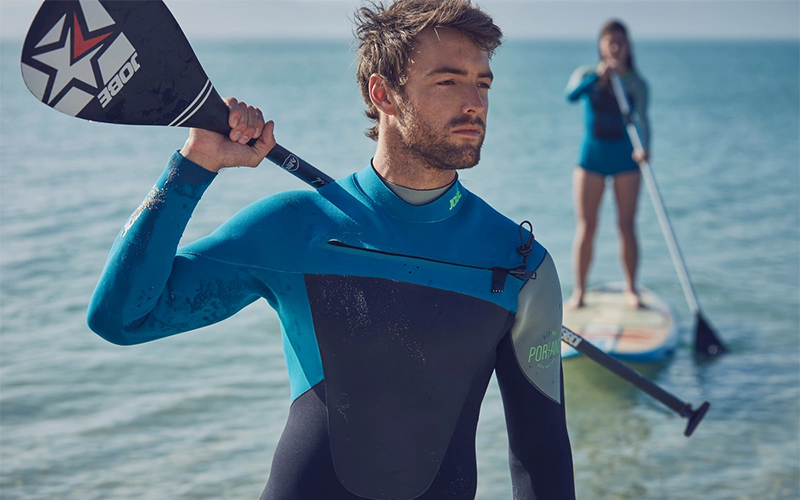
1. Shortened wet-type wetsuit can be purchased at prices ranging from 1,200 to 17,000 rubles. Overalls with long sleeves and pants will start from 5800-6000.
2. Semi-dry models are more expensive: shorty-versions are 5-20 thousand rubles, long ones are from 6,600 to 28 thousand.
3. Suits for spearfishing cost from 2300 to 26 thousand rubles.
4. Prices for dry costumes start from 10,000 rubles and reach 140 thousand.
It will be interesting to friends too

